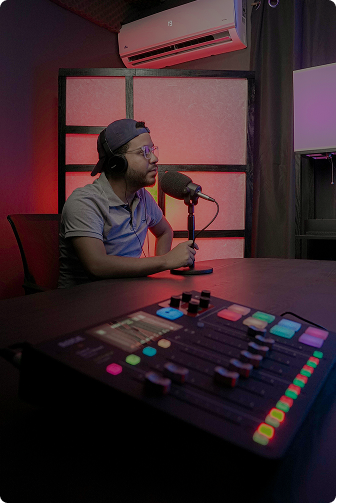Implementing AI and ML in medical imaging
Implementing AI and ML in medical imaging
.png)
In this interview with Harshita Sharma (Microsoft Research Cambridge, UK), we discuss the applications of AI and machine learning (ML) in the field of medical imaging. Harshita provides her insights into the most promising ML technologies currently utilized in medical imaging, any threats this technological advancement may pose and what the future holds for AI and ML in this field.
Could you please explain how AI/ML/DL is applied to medical imaging and what it offers to the medical field?
AI/ML/DL have emerged in different aspects of human life in recent years. Computer vision and ML are closely knit research areas, and medical imaging is a natural extension where these methods can make an impact on humanity through advancements in healthcare. The application of AI/ML to medical imaging can have a potential impact through automation of clinical workflow tasks, speedup of medical image analysis to prioritize time-sensitive cases, more accurate and objective diagnosis, targeted and personalized treatments, reduction in clinicians’ workloads and improvement in patient outcomes. For instance, image segmentation methods using ML have been adopted in clinical practice and proven to reduce the workloads of radiologists in radiotherapy planning . Additionally, AI-assisted diagnostic image interpretation, patient report generation, AI-assisted robotic surgery, workflow task automation and skills training are notable applications where AI shows potential to provide state-of-the-art healthcare and medical practice.
What has been your most recent application of AI in medical diagnostics/imaging?
I have worked in the field of AI in medical imaging for several years on a variety of research projects using different imaging modalities such as histopathology, ultrasound and radiology. During my postdoc, I worked on an interesting research project aimed at modelling the clinical workflow of sonographers in fetal ultrasound . We developed ML models for full-length scan video description and clinical workflow analysis for routine fetal ultrasound scans. This research is a steppingstone in Sonography Data Science with potential real-world applications of understanding and quantifying the sonographer workflow and assessing their skills during routine scanning.
In your opinion, what is one of the most promising current ML technologies that is or can be used in medical imaging?
There have been many recent pathbreaking advancements in ML that could be quite promising in medical imaging research. I am particularly excited by the rise of large language models and generative models in the general domains and the intelligence capabilities that they have demonstrated so far. It will be interesting to see if such models have anything to offer in the healthcare space, including research in medical imaging. Additionally, transformer-based computer vision architectures (for instance, ViTs and Swin transformers) show promising outcomes compared to more traditional convolutional neural networks. It remains a good question if these could bring any breakthroughs in medical imaging research.
Are there any threats posed by AI medical imaging?
This is a very good question! It is important to understand what entails the ML model decision-making process to deploy these in clinical practice, rather than using these as a “black box”. Interpretable and explainable ML models are highly recommended if we want to apply them to real-world medical imaging applications. There are challenges around model generalization and impartiality in AI. Regulations around patient privacy and ethical requirements are also prerequisites before these methods and tools are developed and integrated into clinical practice.
What does the future hold for AI/ML in medical imaging?
AI and ML have shown enormous promise and potential in various general domain applications. As computer vision and medical imaging research is directly linked to advancements in AI/ML, there is vast potential for these methods and tools to be adapted in practice and help address some of the pertinent challenges that we see today in healthcare systems. For example, time-consuming tasks such as interpreting medical images could be automated to reduce turnaround times and clinician workloads. There are growing needs for expert knowledge in different medical imaging modalities that may not be met by traditional training and ML models could help improve skills and speed up training of experts. Also, ML models can potentially provide more accurate and efficient diagnosis by reducing inter-and intra-observer variabilities in medical imaging diagnostics and prognostics. In summary, AI/ML has many exciting and interesting applications in medical imaging that we can look forward to in the future.
Interviewee profile:

Harshita Sharma is a Senior Researcher at Microsoft Research in Cambridge (UK). She works in the Biomedical Imaging team, focusing on ML solutions to improve patient outcomes and clinical workflows. Harshita's research interests include ML, image analysis, computer vision, and multimodal clinical data analysis for healthcare. Before joining MSR Cambridge, she was a postdoctoral researcher in biomedical image analysis at the University of Oxford (UK). There, Harshita explored multimodal analysis methods to model sonographic experience in fetal ultrasound.
Harshita received her PhD in Computer Vision from the Technical University of Berlin (Germany) as a full-time DAAD PhD scholarship holder. Her research focused on image analysis and ML for digital histopathology. Prior to joining my PhD program, Harshita was a lecturer in Electronics and Communication Engineering at the Jaypee Institute of Information Technology in India. She received her master’s degree in Engineering from the Indian Institute of Technology Roorkee (India) and her bachelor’s degree in Engineering from the Indira Gandhi Delhi Technical University for Women in India.
Disclaimers:
The opinions expressed in this feature are those of the interviewee/author and do not necessarily reflect the views of Future Medicine AI Hub or Future Science Group.
.png)
.png)
.png)


